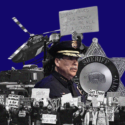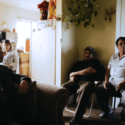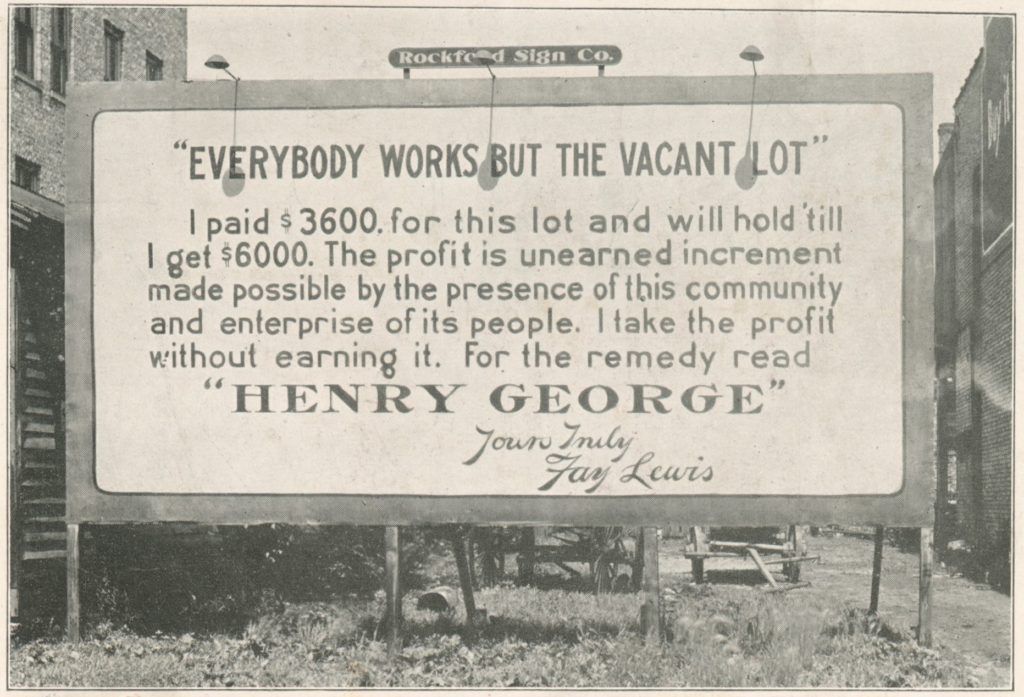Sit-In for Restoration & Momentum: A Conversation with Day of Healing Organizer
by Erin Foley | Published September 30, 2020 in Journalism
15 minute read“There is no one coming to save us, it is us … Right now, we are eternal. We are eternal, say it with me, I am eternal. The power, it is within us. Our ancestors live, we do not die EVER, that is not our way, we have been brainwashed to think that is our truth.”
Combining poetry and music with other wellness activities such as meditation and sound baths, Sunday’s Day of Healing 2020 welcomed a diverse crowd clad mostly in white to the Bluff. The lineup for the event featured several local poets, musicians, and inspirational speakers.
Originally intended for Sep. 13, the event was postponed days prior due to unhealthy air quality projections without a firm date for rescheduling. Then, on Sep. 23, the verdict for police officers involved in the shooting that murdered Breonna Taylor in Louisville, KY hit the news. Only one officer, Brett Hankinson, was charged—for reasons unrelated to Taylor’s murder.
To the backdrop of renewed outrage and grief, organizer Shelley Bruce felt more compelled than ever to offer the Day of Healing event in order to help with the “restoration and momentum” of local organizers and activists who understandably expressed anger, sadness, and exhaustion in response to the clear lack of justice in the verdict.
Bruce spoke to FORTHE about her appreciation for the hardworking Black women behind the scenes in the Black Lives Matter (BLM) movement and the need for the prioritization of self-care in the interest of preventing burnout. We talked with Bruce about a variety of subjects, ranging from her interaction with police at the event, the mixed feelings many Black folks have for the ocean, to the need for continued community conversations on transformative justice.
The last topic was put to the test during Sunday’s event when an unpleasant interaction with an attendee who reportedly had harassed multiple community members (specifics not disclosed) put the group to task for upholding principles of transformative justice.
Below are some excerpts from our conversation with Bruce.
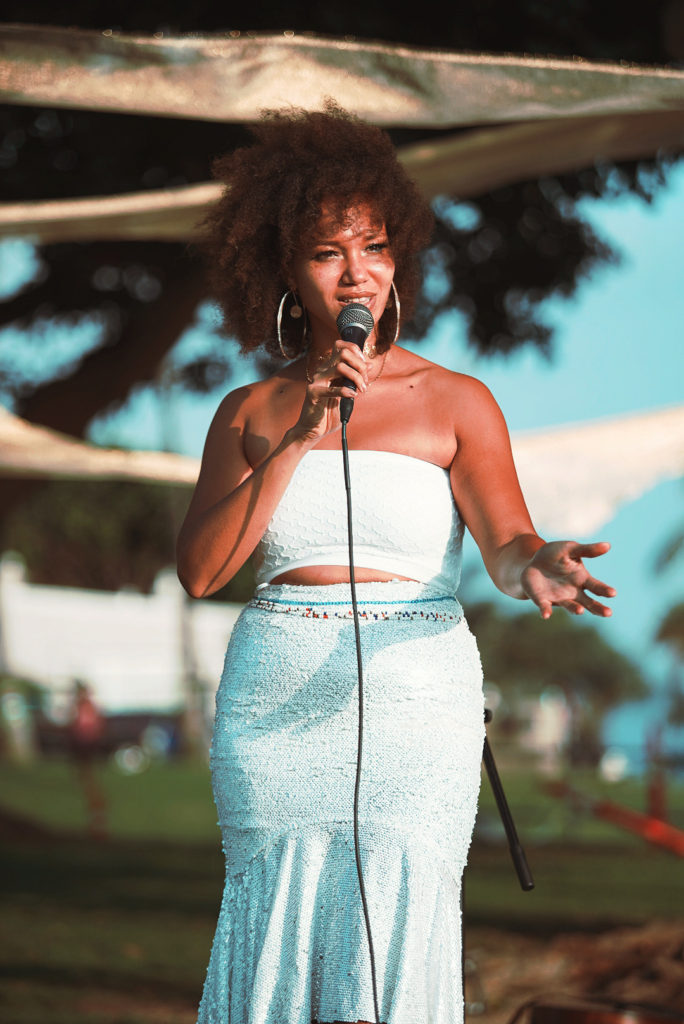
On practicing transformative justice in real time, finding alternatives to police, and creating systems of community care as part of the healing process:
“As a community, we’ve been discussing [that] we’re not gonna call the cops on a person because we don’t believe in that. However, we have to have boundaries. So this person came, and we tried to enforce our boundary and asked them to leave, and they wouldn’t. And then we had to create the next boundary of more people coming [into the situation] and an elder coming [to mediate].
As a community we need to be clear that we will not tolerate that kind of behavior. We will not tolerate disrespect. But I think what happens as a woman and as people who are survivors of things, I have this guilt about it. I’m like, ‘Oh, am I too angry? Am I dramatic?’ But it’s like, no … So that happened and I think my mood shifted at the end.
Healing is not a singular process. It takes time, there’s mourning, there’s grief, there’s rage, there’s joy, there’s peace, there’s a lot of things that happen. Healing involves a combination of emotions, and it may not always be pretty.”
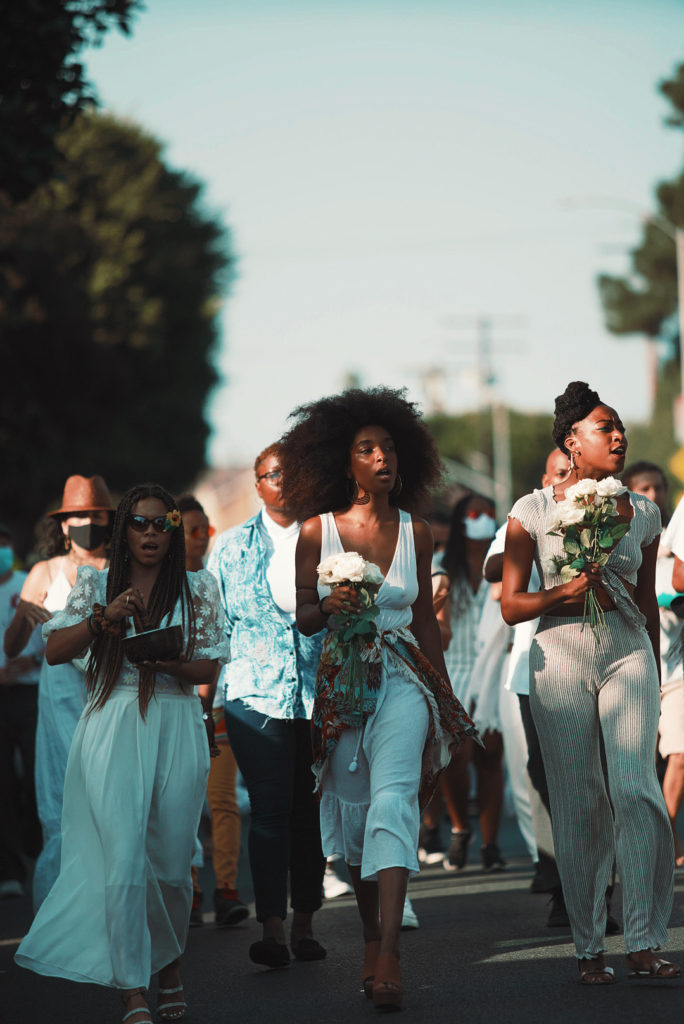
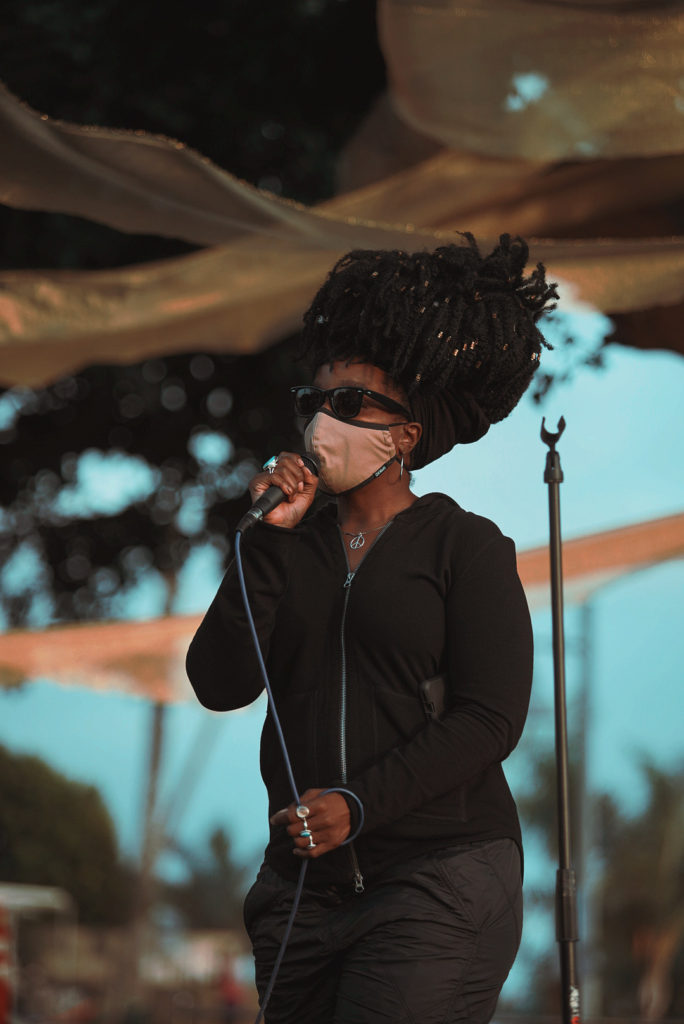
On her intention behind creating the event:
“I’ve had burned-out moments [doing community organizing]. I know how important it is to help remind people to have mindfulness and self-care and healing, so that we can continue to do this work.
“Rainbow Juice donated fresh pressed juice, so people are nourishing themselves and we’re meditating, we’re screaming or crying or giving things to the ocean … This is important self-care, this is spirituality and mindfulness, being present.”
On why the event started with a sound bath walk:
“We wanted to open up the day with a march led by some of the Black women speaking at the event. Xiana sang some traditional West African songs too, and I feel like everyone had a beautiful, peaceful moment of reverence to reflect and really feel like they were being seen by the community.”
Tomisin Oluwole
Ode to Pink II, 2020
Acrylic and marker on paper
14 x 22 inches
Click here to check out our interview with Tomisin Oluwole, a a literary and visual artist based in Long Beach.
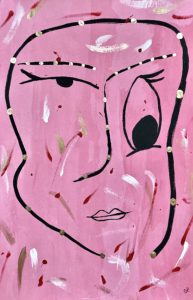
Instead of gunking up our site with ads, we use this space to display and promote the work of local artists.
“This fight is against white supremacy, the patriarchy, ableism, xenophobia, homophobia, and transphobia. Black woman and queer people have been leading this fight, and you have seen that here in this space.”
On honoring the Black women dedicated to fighting for racial equity and justice:
“Healing Long Beach was definitely [created] to appreciate the work of Black Lives Matter organizers, [who] are mainly Black women like Audrena [Redmond] and Sheila [Bates], and others … They’re planning the marches. They’re at the rallies. They’re responding. They’re figuring it out. Ultimately, this is difficult work. They deserve to be appreciated so they can continue to do their work. We’re very grateful to them for speaking their truth, and reminding us about the policies, the committee meetings, and how people can specifically show [up] for Black Lives Matter Long Beach. Support them! Donate! Go to the meetings!
Healing is about giving folks their flowers now, not [just] when they pass, not [just] when we have to say their name. We can also appreciate the folks who are with us and give them the support and protection that they need now. They deserve to have a space to speak and be acknowledged.”
On why it’s important to accurately portray the intentions of this event:
“It’s not just about however many people show up. It’s the action that took place, the narrative that comes from that action, and that should be said. Whether it’s social issues within our community, whether it’s queer issues … it was intentionally, very explicitly discussed that it is Black women and queer folks who have led these movements.
The biggest messaging that I want to clarify is that when we say we’re a different expression of protest, we’re not doing a protest in contrast to everything else, we’re offering it in addition to what’s happening, and that really needs to be understood. That is the truth of what needs to be covered. There are multiple ways to do this work. In fact, we have to have multiple ways to do this work, because that’s life … We’re working to heal whole lives … Protest is actually peaceful. It’s folks antagonizing protesters that make it not safe. It’s police who antagonize … People expressing their anger is not unsafe, it’s actually a very, very healthy thing to do in response to gross injustice.”
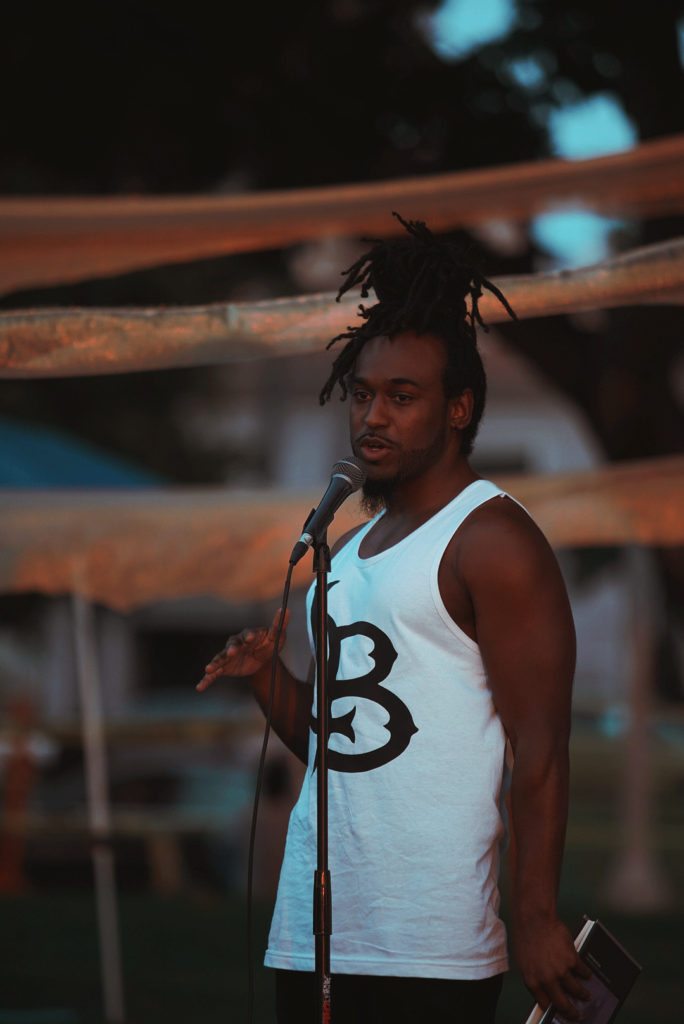
“Stop with alternative facts, gotta fight back with the truth, we plant that seed in the youth, please, pray that it grows deep roots, so they know what not to believe at school. See, might be the teacher, might be the text...”
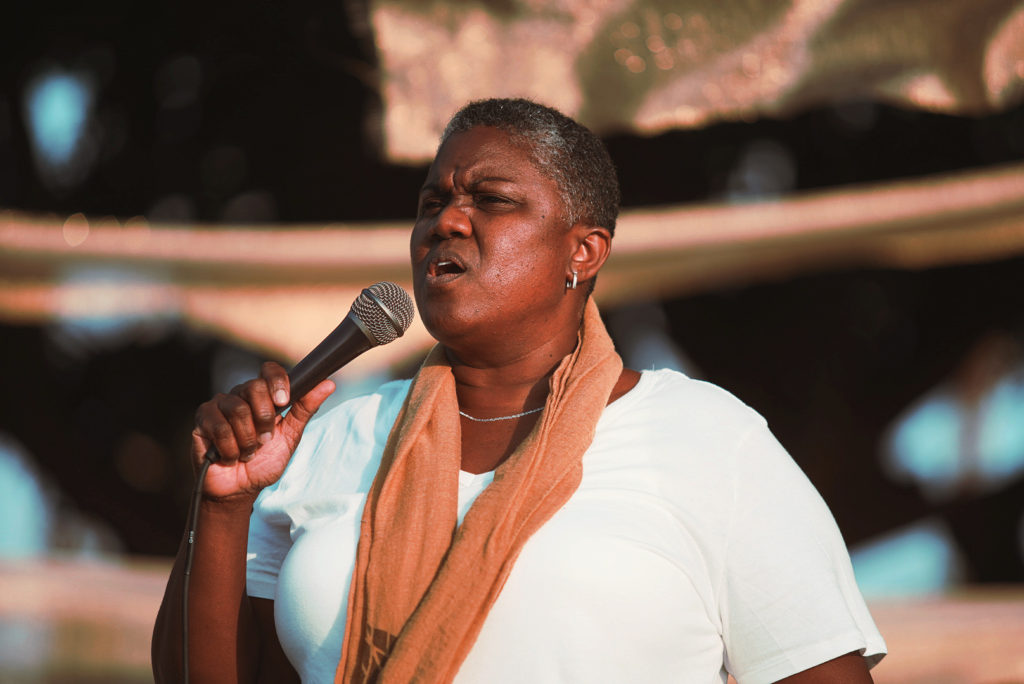
On how the ideas of self-care and healing are complex:
“I don’t want people to expect to come to a healing day and everyone be happy-go-lucky. There will be women who may express their rage. There may be people who cry, there may be people who sing and dance … you know, we’re fighting for people’s lives and healing is complex.”
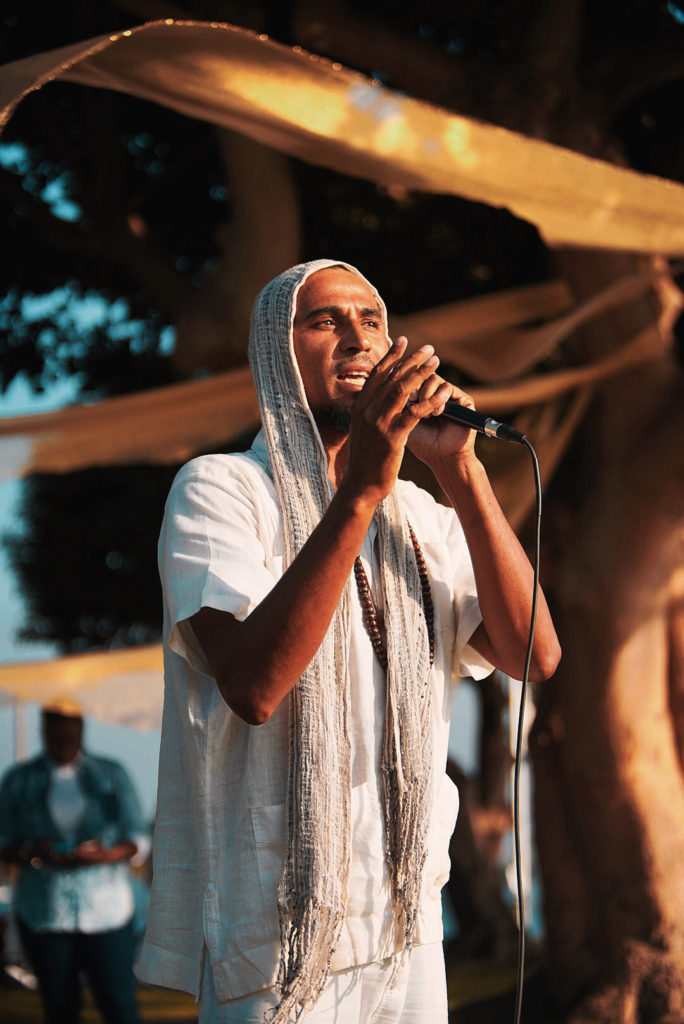
On police presence at the event:
“The LBPD came and I asked them to leave because they had no place being there; we are protesting them … They offered their help and we told them the only help that we actually need is for you to fire and convict officers in your department who have killed people.”
On ending the event with a ceremony on the beach:
“For African-American people, the ocean can also be a very traumatic place because that is a reminder of how our ancestors were brought here. And we’re doing these offerings [of flowers to the ocean] and it’s a process of mourning. I think my heart was heavy for the issues within the issue. My heart was heavy for the folks whose lives we were honoring and celebrating … but it was also very beautiful.”
“You're too big of an idea to be quiet. Sister, you better say something...”
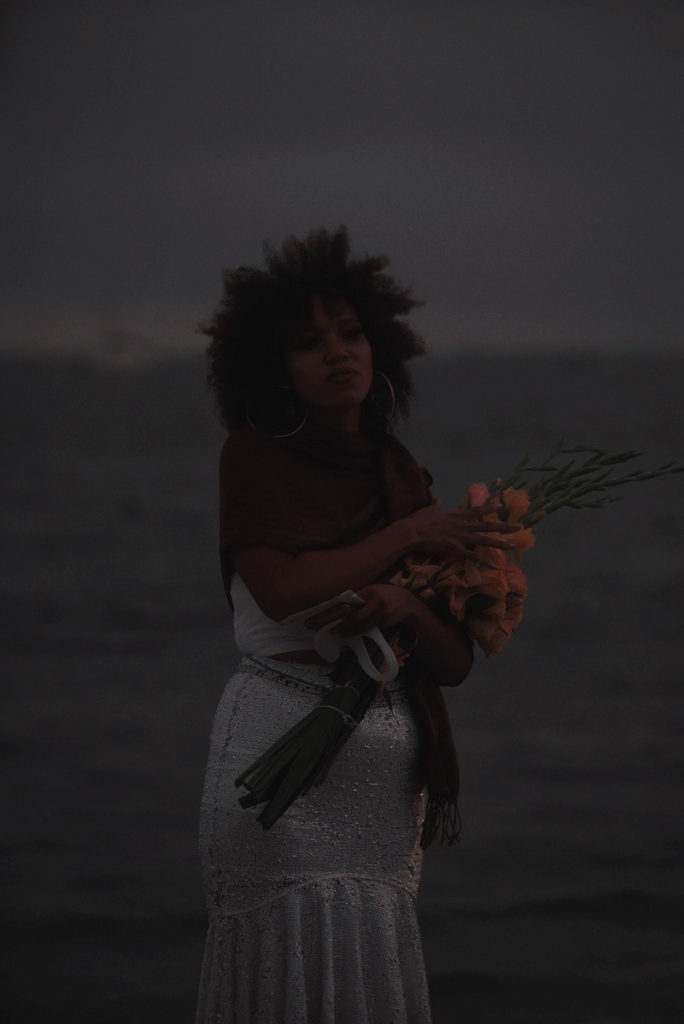
Help Us Create An Independent Media Platform for Long Beach
We believe that what we are trying to do here is not only unique, but constitutes a valuable community resource. We are dedicated to building a fiercely independent, not-for-profit, and non-hierarchical media organization that serves Long Beach. Our hope is that such a publication will increase civic participation, offer a platform to marginalized voices, provide in-depth coverage of our vibrant art scene, and expose injustices and corruption through impactful investigations. Mainly, we plan to continue to tell the truth, and have fun doing it. We know all this sounds ambitious, but we’re on our way there and making progress every day.
Here’s what we don’t believe in: our dominant local media being owned by one of the city’s wealthiest moguls or a far-flung hedge fund. We believe journalism must be skeptical and provide oversight. To do so, a publication should remain free from financial conflicts of interest. That means no sugar daddy or mama for us, but also no advertisements. We answer to no one except to our readers.
We call ourselves grassroots media not only because we are committed to producing work that is responsive to you, dear reader, but because in order for this project to continue we will also need your support. If you believe in our mission, please consider becoming a monthly donor—even a small amount helps!

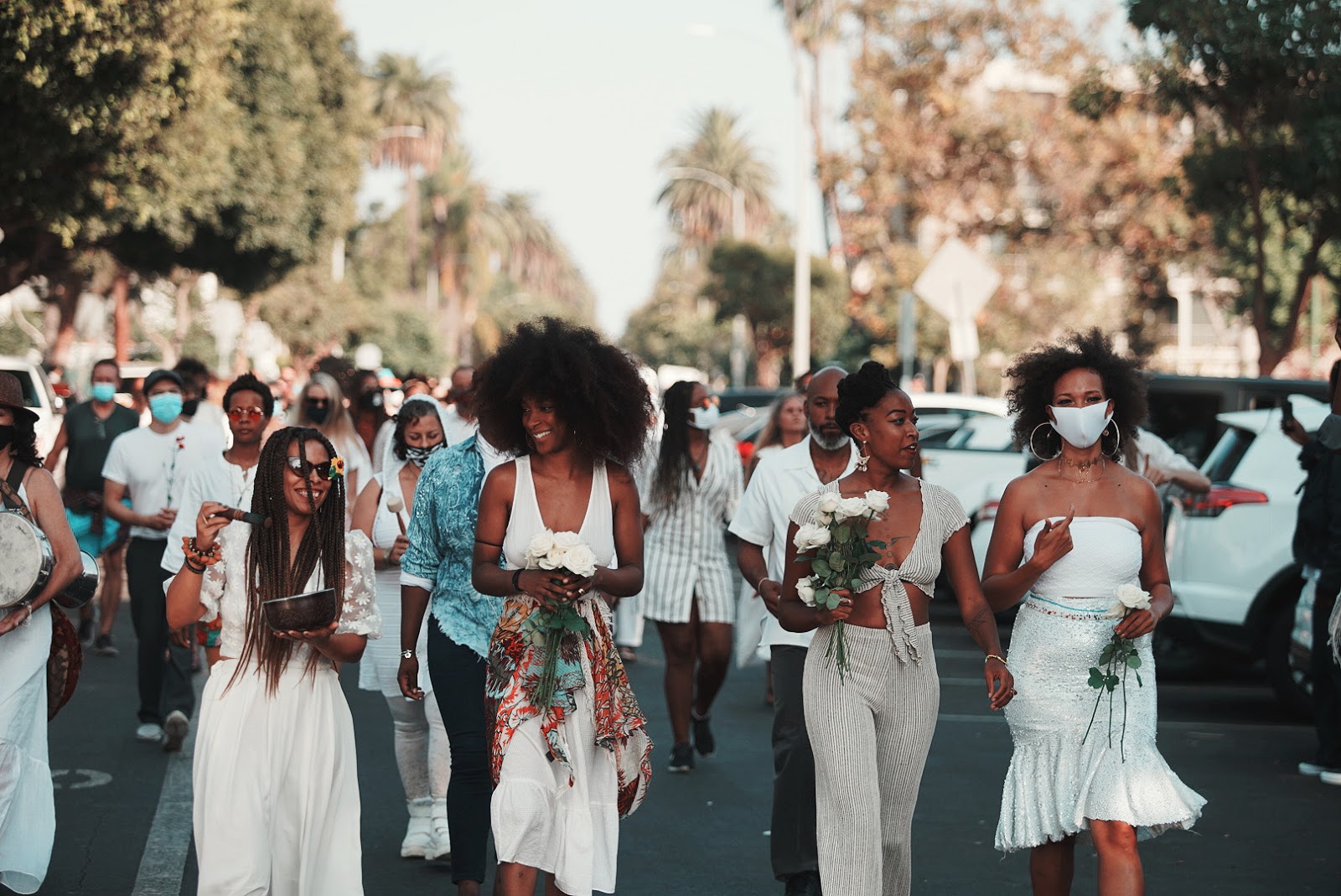
 erin@forthe.org
erin@forthe.org